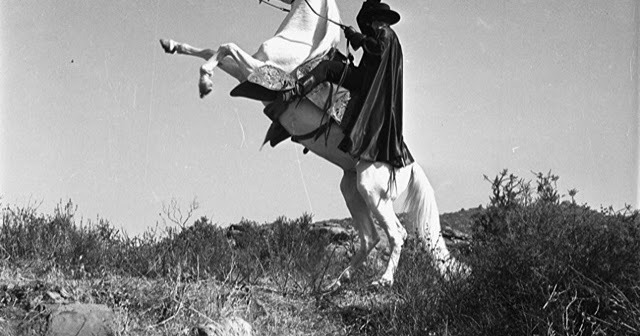
Slob with a blog. Vicariously join me on my movie viewing adventures! Visit my blog here: http://jinglebonesmovietime.blogspot.com
297 posts
FATHER BROWN Aka THE DETECTIVE (Dir: Robert Hamer, 1954).

FATHER BROWN aka THE DETECTIVE (Dir: Robert Hamer, 1954).
The second big screen outing for G K Chesterton's fictional detective Father Brown, adapted from his 1910 short story The Blue Cross.
Roman Catholic priest and amateur detective Father Brown (Alec Guinness) pits his wits against elusive master criminal Flambeau (Peter Finch), intent on stealing a priceless cross from the clergyman.
Originally exhibited in the UK as Father Brown, the movie is now more widely available in prints bearing its US title The Detective. A glance at Father Brown’ s cast and crew and one would be forgiven for thinking this Columbia Pictures release was an Ealing Studios production. Director Hamer is reunited with his Kind Hearts and Coronets (1949) stars Alec Guinness and Joan Greenwood, whilst Ealing alumni Peter Finch, Bernard Lee, Sidney James and Cecil Parker all feature. However, any similarity between this lightly humorous detective story and an Ealing comedy ends here.
Languishing part way between comedy and mystery, the movie straddles both genres without a firm footing in either. Never reaching the witty heights of Kind Hearts and Coronets and not quite exciting enough to convince as a thriller. It ambles along nicely enough but lacks the narrative twists and turns that would have elevated the story above the mundane. Thelma Schnee and Hamer's screenplay never quite manages to over come the source material's inherent quaintness and at times threatens to become unbearably twee.
Alec Guinness is excellent as ever here, once again immersing himself chameleon like in the role of Brown. He is matched by the equally impressive Finch in a rare comedic performance for the actor, albeit not one especially played for big laughs. The rest of cast are, unfortunately, somewhat underused in what is largely a two-hander between Guinness and Finch.
Father Brown is good movie, but can't help but feel a little bit of a disappointment considering the talent involved. It is still worth a watch, if only for the excellent performances from its leading men. Not quite a classic, but a high quality time passer nonetheless.
Check out my blog JINGLE BONES MOVIE TIME for a longer review of Father Brown. Link below.
-
 tresfoufou liked this · 2 years ago
tresfoufou liked this · 2 years ago -
 bridgehampton liked this · 5 years ago
bridgehampton liked this · 5 years ago -
 thereactionary reblogged this · 5 years ago
thereactionary reblogged this · 5 years ago -
 thereactionary liked this · 5 years ago
thereactionary liked this · 5 years ago -
 toribeereadsbooks reblogged this · 5 years ago
toribeereadsbooks reblogged this · 5 years ago -
 toribeereadsbooks liked this · 5 years ago
toribeereadsbooks liked this · 5 years ago -
 a-study-in-melapples liked this · 5 years ago
a-study-in-melapples liked this · 5 years ago
More Posts from Jingle-bones

100+ movie reviews now available on my blog JINGLE BONES MOVIE TIME! Link below.

BUGSY MALONE (Alan Parker, 1976).
Alan Parker’s feature film directorial debut is really something special. A musical homage to 1930’s gangster movies with a cast made up entirely of children really shouldn’t work, but it does.
Gang warfare rages in Prohibition-era New York as hoods Fat Sam and Dandy Dan battle for supremacy in the city. Armed with newfangled splurge guns (whipped cream firing machine guns), it looks like Danny Dan’s mob is winning. Speakeasy owner Sam engages good guy Bugsy Malone to help in his fight against Dan, while Bugsy has his sights set on aspiring showgirl Blousey Brown.
Recalling both the classic Warner gangster flicks and early backstage musicals, Bugsy Malone is itself a film which largely avoids categorisation. It is a love letter to the Hollywood of the 1930s. The beautifully detailed sets of dimly lit back alleys and colourful speakeasies faithfully recalling the era of Cagney and Robinson. Paul Williams superb jazz inspired score provides perfect accompaniment to the visuals, while the witty, quick fire dialogue would befit a period screwball comedy. The soft focus camera work and plethora of brown on display gives the feel of an old sepia tone photograph and adds to the era atmosphere.
An assured and charismatic performance from Scott Baio as Bugsy is surprisingly his first screen appearance. As was true of much of the cast. Florrie Dugger is touchingly melancholic as Bugsy’s gal Blousey in her only movie, while John Cassisi embodies gleeful roguishness as Fat Sam, one of only a handful of acting roles for the youngster. Only Jodie Foster, in the supporting role of showgirl cum moll Tallulah, was a veteran performer and gives the first rate professional performance you would expect. But to the credit of the cast and director Parker, none of the kids put a foot wrong and are never upstaged by the more experienced star.
There really is nothing else like Bugsy Malone in cinema history. As artful as it is entertaining and equally enjoyable for children and grownups; a unique, unadulterated pleasure from beginning to end!
Visit my blog JINGLE BONES MOVIE TIME for a longer, more in-depth review of Bugsy Malone! Link below.





のりさんのツイート: “あった!!!全人類私の人生で最もロマンチックだった瞬間の写真見て… ” https://twitter.com/_nollipop_/status/981671618890969088

THE SIGN OF ZORRO (Dir: Norman Foster & Lewis R Foster, 1958)
Guy Williams stars as the vigilante hero who "makes the sign of a Z" in Walt Disney's feature film version of the hit Zorro TV series, broadcast on the ABC network from 1957-59.
Following a lengthy absence, Don Diego (Guy Williams) returns home to the Spanish Californian pueblo of Los Angeles. Finding his hometown under the rule of cruel Captain Monastario (Britt Lomand), he dons a black cape, assumes the new identity of Zorro and determines to overthrow Monastario and restore order to the pueblo. Cue lots of sword fights!
As with Disney's earlier feature Davy Crockett, King of the Wild Frontier (Norman Foster, 1955), The Sign of Zorro was edited together from episodes of a TV series. Screened in black and white but filmed in colour, Davy Crockett was a high quality production that transferred to the cinema with ease. Zorro was a more modestly budgeted production shot in black and white. Its static camera work and proliferation of close-ups did not hold up as well on the big screen. The cobbling together of various episodes results in a somewhat disjointed narrative with multiple climaxes and plot threads which are never properly resolved.
That said, the movie does have it compensations. Guy Williams makes for an appealing, athletic hero and is well supported by Gene Sheldon as mute man servant Bernardo and Henry Calvin as local law enforcer Sergeant Garcia; their deft comic performances nicely complementing the lighthearted heroics.
While the movie did not manage to repeat the success of the superior Davy Crockett, it did well enough to warrant a sequel. However, Zorro the Avenger (Charles Barton, 1959) was marketed solely to international audiences and was not released in the US.
Despite its shortcomings, this is an entertaining movie, thanks to its appealing cast and general good-natured ambience. If, like me, you enjoy a bit of swashbuckling you will find The Sign of Zorro has an easy going charm that is hard to resist. Slightly shabby but a lot of fun!
Check out my blog JINGLE BONES MOVIE TIME for a longer, more in-depth review of The Sign of Zorro. Link below.

